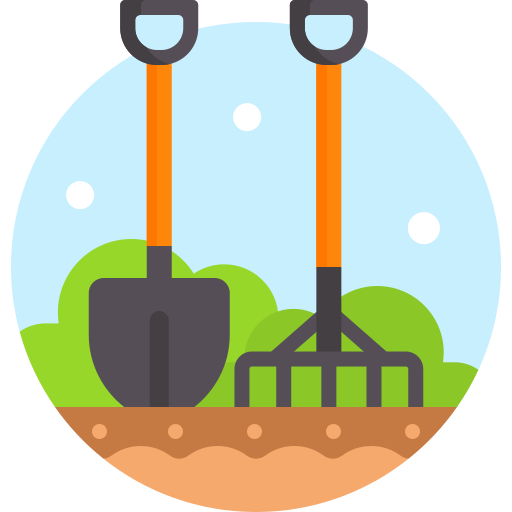Having never owned a house or really had a yard of my own, I got pretty excited and decided to do some ad-hoc landscaping. Built some raised beds for vegetables, and just laying in some organic shaped in-ground beds for low water decorative plants. Gonna fill the rest in with gravel. Any pointers?


Not sure on your location as from the picture it doesn’t look like you’re in the USA. However some places have restrictions on gathering water from your roof due to the materials used to clad the roof being poisonous. I would just double check that as I wouldn’t want to consume any fruits or vegetables that have been grown in water that wasn’t safe. I would also use a water butt or gatherer rather (totally covered from sun light) than hosing directly into a plant bed as if it’s raining. The plants will already be getting watered from the rainwater so you want to store the rainwater for use later.
And then there are even further rules on storing water in some places - in Colorado I’m only allowed ~100 gallons of rainwater collection storage because someone else owns the water rights to the land my house is on.
This is bewildering. Are you really subject to regulations that forbid you from storing and using rain water as you see fit? Because you must buy water from a third party?
Is there a reason behind this other than capitalism?
Yeah I can’t even think of a secondary or tertiary reason.
Unless it’s to stop people from storing it and using it inside? But even than… so my thought on that one is overall maintenance.
In my city you get charged 30% iirc of your water use for sanitary use, so that pays for waste water treatment and maintenance of sewer lines. It’s not a full 100% because people water the yards and other stuff, and it’s not feasible to measure waste discharge.
So the only reason I could think of with, is so people aren’t getting around water fees and therefore sewer maintenance fees.
But it’s probably capitalism instead of trying to maintaining infrastructure.
Water rights in the Western US are wild. I wrote a small rant above if you’re interested. There is very legitimately not enough fresh water to go around from rivers like the Colorado to support continued agriculture and population expansion. (I blame agriculture 10x more than population, but that’s my hot take)
Oh yeah shit downstream water would be huge. Retaining that water prevents it from being available from watershed.
I’m right next to the Rockies and we get glacier melt and snow melt. So it’s weird seeing those restrictions elsewhere where we don’t have them but being basically the same geographically. BUT we were on water rationing last year to save the reservoir level, but the city also provides a rain barrel program, and no limits as far as I know/saw.
Linky
Wow, great to see a government encouraging it instead of saying you can’t do it! I’m also right next to the Rockies just far south of you in Colorado, and we get very different messages.
It is weird. Like if every house had 200 gallons of storage, that could add up to a small dam’s worth of storage at almost no cost to the government. It makes more sense to me to encourage houses to store it.
It really might come back around to blame capitalism - since like 90% of water is used for agriculture here maybe the downstream money makers are the ones yelling the loudest.
I think we are super blessed where we live. The government actually seems to care about the environment, does stuff about it, pushes for code compliance like no other, and has some of the best resources I’ve seen. You’ve got water data, tree data, a state of the art composting facility with free public compost, programs out the Wazhoo.
Tree database p
@d2k1 @Harriet_Porber Down stream water rights.
Oh boy - it’s a rabbit hole. As much as I like to blame capitalism for things, this one kind of stems earlier than that. Water rights and usage in the Western US is pretty fucked, and it’s only going to get worse with climate change.
I have some hot takes after reading Cadillac Desert and some other books on water rights. I’m going to lazily link to another comment where I wrote a tiny bit about this book. What’s fun is lots of river water allocations in the Western US were written in times of excess and aren’t even remotely accurate for normal times let alone times of drought. The Colorado River has only flowed through to the Pacific Ocean like once in decades (citation needed) and Mexico doesn’t even get their allotted share. It’s mouth to the Pacific is mostly a dry bed of dirt 🫠.
My house is in the watershed of the South Platte River, so Nebraska is the one who’d get mad if I put out a 3rd 55gal drum rain barrel. There’s a fun 100 year old compact that says Nebraska is allowed to seize land to build a canal to take their full allocation - a couple years ago Nebraska started to threaten to inact on their rights and Colorado’s just like ‘good fuckin luck’
We’re closer to playing out Mad Max in my lifetime than I’d like. Sorry to bring down the vibe in Gardening 😂
Water rights in Colorado are wild. Our state is relatively arid and just coming out of a long term drought, yet has the headwaters for many of the nation’s major rivers; overusage here can have an outsized impact on downstream states.
A lot of these measures are responses to falling water levels and climate change. Every state on the Colorado river is party to a federally-negotiated water sharing agreement, which means we’re always at some level of water rationing. You would think they’d strictly target bigger agricultural operations, golf courses, and the like, but… here we are.
I’m actually in Colorado as well, so also limited to (I believe) two barrels totaling not more than 110 gallons.
I’m really hating the people of authority on this planet right now. All of 'em. Corporate and government.
Rain water? JFC